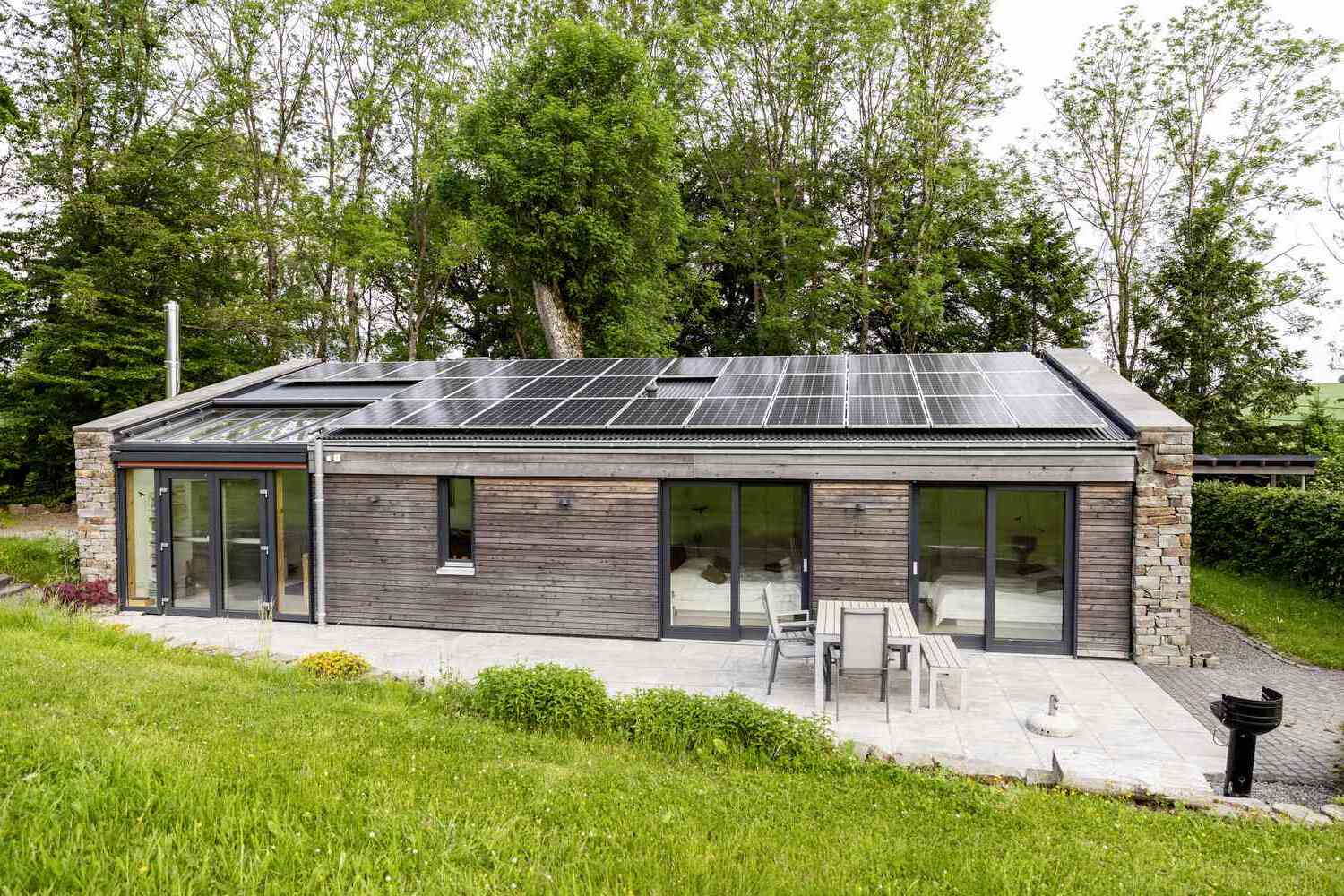
Sustainable architecture is more than just a trend; it's a crucial step towards reducing our environmental footprint and creating buildings that not only stand the test of time but also promote healthier living spaces. Sustainable architecture incorporates energy-efficient materials, renewable resources, and innovative design techniques to minimize ecological impact. From solar panels to green roofs, architects are finding creative ways to blend functionality with sustainability. This approach not only conserves resources but also offers economic benefits by reducing energy costs. As awareness grows, sustainable architecture is becoming increasingly important in our fight against climate change, making it essential for both the planet and future generations. In this introduction, we'll uncover 16 fascinating facts about sustainable architecture, highlighting its significance and the innovative strategies that make buildings greener and more efficient.
What is Sustainable Architecture?
Sustainable architecture focuses on minimizing environmental impact through energy-efficient designs, use of renewable resources, and conservation of ecosystems. This approach not only reduces carbon footprints but also aims for buildings that are in harmony with their natural surroundings.
-
Sustainable architecture integrates eco-friendly materials and innovative technologies to create structures that are both functional and sustainable.
-
Buildings designed with sustainability in mind often feature solar panels, green roofs, and natural ventilation systems to reduce reliance on fossil fuels.
Why is Sustainable Architecture Important?
In an era of rapid climate change and dwindling natural resources, sustainable architecture emerges as a critical solution. It addresses the urgent need for buildings that contribute positively to the environment, promoting healthier living spaces and a better quality of life.
-
Sustainable buildings significantly lower energy consumption, leading to reduced greenhouse gas emissions.
-
Utilizing local and sustainable materials lessens the environmental impact of transportation and supports local economies.
Key Elements of Sustainable Architecture
Sustainable architecture is not just about the materials used; it's also about thoughtful design and the integration of renewable energy sources.
-
Passive solar design is a technique that takes advantage of the building's site, climate, and materials to minimize energy use.
-
Water conservation technologies, such as rainwater harvesting and greywater recycling systems, are essential components of sustainable buildings.
-
The use of non-toxic materials and products ensures healthier indoor air quality for occupants.
Examples of Sustainable Architecture Around the World
Globally, numerous buildings exemplify the principles of sustainable architecture, showcasing innovation and efficiency.
-
The Edge in Amsterdam, Netherlands, is often cited as one of the greenest buildings in the world, featuring an energy-efficient design and state-of-the-art technology.
-
Singapore's Gardens by the Bay not only serves as a major tourist attraction but also demonstrates the potential of integrating nature with urban environments.
Challenges Facing Sustainable Architecture
While the benefits are clear, sustainable architecture faces several obstacles, from high initial costs to regulatory hurdles.
-
The upfront investment for green technologies and materials can be higher than traditional construction costs, though they often lead to long-term savings.
-
Navigating building codes and regulations that do not always support innovative, sustainable practices can be a significant challenge for architects and builders.
The Future of Sustainable Architecture
As technology advances and awareness grows, the future of sustainable architecture looks promising. Innovations in materials and construction methods continue to open new possibilities for eco-friendly design.
-
Emerging technologies like 3D printing and smart building systems are set to further revolutionize sustainable architecture.
-
The growing trend towards urban farming and vertical gardens in city buildings reflects a shift towards more self-sufficient, green living spaces.
-
As public demand for sustainable buildings increases, more governments and corporations are committing to green building standards and certifications.
How You Can Support Sustainable Architecture
Supporting sustainable architecture goes beyond the work of architects and builders; it requires a collective effort from communities, businesses, and individuals.
-
Advocating for green building policies and supporting businesses that prioritize sustainability can drive broader adoption of sustainable practices.
-
Considering sustainability in your own home, whether through small-scale renovations or by choosing eco-friendly materials, contributes to the global effort towards a more sustainable future.
A Final Sketch on Sustainable Architecture
Sustainable architecture isn't just a trend; it's a necessary shift towards a more responsible and eco-friendly approach to building. From reducing carbon footprints to enhancing energy efficiency and promoting a healthier environment, the principles of sustainable design offer a blueprint for the future. As we've seen, incorporating renewable materials, innovative technologies, and green spaces can significantly impact our planet and well-being. Embracing these practices isn't just about constructing buildings; it's about crafting spaces that harmonize with their surroundings, conserve resources, and enrich our lives. Let's carry forward the lessons learned and continue pushing the boundaries of what's possible in sustainable architecture. After all, every small step towards sustainability is a giant leap for our planet.
Was this page helpful?
Our commitment to delivering trustworthy and engaging content is at the heart of what we do. Each fact on our site is contributed by real users like you, bringing a wealth of diverse insights and information. To ensure the highest standards of accuracy and reliability, our dedicated editors meticulously review each submission. This process guarantees that the facts we share are not only fascinating but also credible. Trust in our commitment to quality and authenticity as you explore and learn with us.


